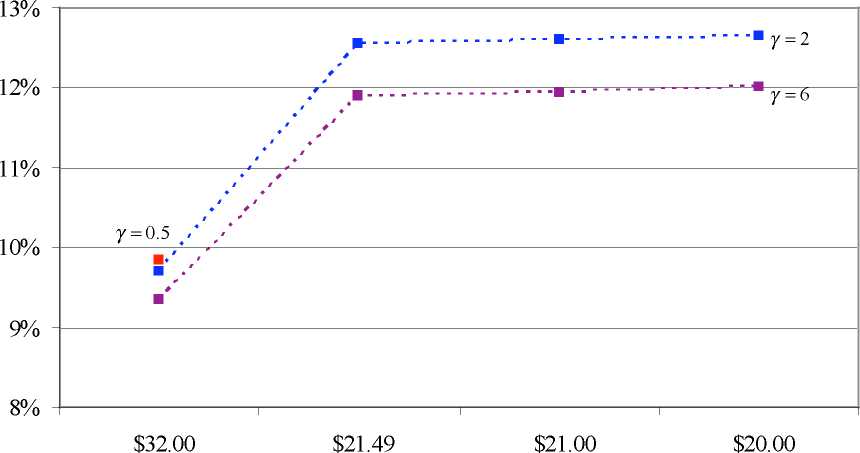Current Agriculture, Food & Resource Issues
M. Doyon, C. Brodeur and J-P. Gervais

Figure 4 Maximum discount rate of production quotas that entails no participation in the IEM
program for deliveries in May 2002 when average variable costs are $16 per hl.
$20, the decision rule is not to participate in the IEM unless the discounting factor is
higher than 12 percent. The numerical model generally fails to explain the actual
marketing decisions of high-cost-of-production dairy producers in May 2002. A marginal
cost of production of $20 or more makes the return of the risk-free asset in the model (the
export market) insignificant; thus no sensible discount rate can explain participation in the
IEM under these assumptions.
Summary
The main objective of this article is to estimate Quebec dairy producers’ quota discount
rates conditional on some structural parameters related to risk preferences and technology.
Results show that maximum annual discount rates that entail no participation in the export
market range from approximately 8 percent to 12.5 percent in the months of May 2001
and 2002. The precise estimate depends on a number of factors, such as the producers’
degree of risk aversion, producers’ cost efficiency and the non-stochastic return on the
export market. These figures are relatively greater than the commercial risk-free interest
rate on government bonds or returns on other risk-free assets sometimes used to discount
quota values. Conversely, they are smaller than previously computed discount rates (e.g.,
Chen and Meilke, 1998).
128
More intriguing information
1. Experience, Innovation and Productivity - Empirical Evidence from Italy's Slowdown2. Perfect Regular Equilibrium
3. Sectoral Energy- and Labour-Productivity Convergence
4. Großhandel: Steigende Umsätze und schwungvolle Investitionsdynamik
5. The name is absent
6. The name is absent
7. The name is absent
8. The Impact of Cognitive versus Affective Aspects on Consumer Usage of Financial Service Delivery Channels
9. Co-ordinating European sectoral policies against the background of European Spatial Development
10. The name is absent